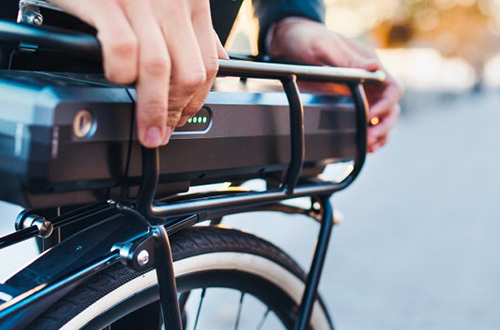El Segundo, CA 90245 (310) 640-2453
Tues - Sun: 11am - 6pm
Mon: Closed
How Do Electric Bikes Work?

How Do Electric Bikes Work?
Electric bikes are bicycle frames elevated by the power of electric motors, but how exactly do they work? Electric bikes feature pedaling and handling similar to a normal bike, and everyone who rides picks up the mechanics almost instantly! Let’s see what they consist of.
Key Components of Electric Bikes
The key components of an electric bike are the battery, motor, brakes, and frame. All bikes have at least these parts, though most tend to have far more bells and whistles (literally!). What components bikes have outside of these can be dependent on their type, as cruisers are far different from, say, mountain electric bikes!
Battery
One of the key components of an electric bike is the battery. Batteries are mounted on the frame, often near the seat tube if not integrated. While many battery types exist, lithium-ion batteries are most common because they possess both a powerful charge and a light weight. Electric bikes actually require very little energy — less than it takes to power a toaster — but need light batteries so that the energy isn’t wasted on carrying the battery around.
Motor
Electric bikes have compact electric motors. They may be hub motors or mid-drive, the classification of which depends on where the motor is mounted on the frame. They’re often brushless motors, ranging from 200W to 1000W+ — though the United States has a legal limit of 750W. Larger, more powerful motors allow bikes to go faster, but also drain the battery more quickly.
Brakes
Most electric bikes have hydraulic disc brakes for fast, precise stopping. Many also have regenerative braking, where spinning wheels turn the hub motor and charge up the batteries — which can help charge batteries on down-hills where power isn’t needed.
Frame
Electric bike frames come in many different shapes and sizes, but all of them are built to be both lightweight and extremely sturdy. Aluminum alloy is the most popular material to use, and its low density is great for keeping battery expenditure to a minimum. Despite its low weight, aluminum alloy is very durable and can support well over 250 pounds, if not more.
Types of Electric Bike Motors
Electric bikes may sometimes be divided up by their motor types. Hub motors are integrated into the rear or front wheel. While efficient on straightaways, hub motors lose their power on hills and varied terrain. Mid-drive motors are integrated with the bike’s crank and gears. Mid-drive motors offer better performance with less battery energy, as well as better climbing power. They’re often placed lower on the frame of the eBike in the center, providing better handling as well.
Types of Control Systems
Control systems refer to the electric assistance on a bike, and eBikes may be full-power or power-assist.
Full-Power
Full-power control systems may be referred to as throttle control. These bikes have twist-grip or thumb-press throttles and allow for minimal pedaling over shorter distances. The range for full-power bikes is limited, and this electric-only riding can get you about 10–20 miles. Full-power bikes are typically road or cruiser style.
Power-Assist
Power-assist control systems, also called pedal-assist, are the most common. They can be driven normally, as a bicycle, but also give power to everyday riding, especially in mountain eBikes. The motor gently provides power between low and high levels, with each model having a specific number of settings depending on its design. These types of eBikes aren’t hub motors but instead consist of an electric motor mounted on the rear wheel that can easily turn with little or no resistance when you pedal — unlike electric motors. Because they can rely on human assistance, these bikes have a much longer range.
Shop From the Experts at Electric Bikes LA
With so many different models and makes, shopping for an electric bike can be challenging. Don’t feel lost on where to start; just visit Electric Bikes LA today instead! Our team of Bike Advisors and Bike Techs have years of experience and are happy to walk you through our incredible selection and provide test rides of your favorite options. Visit us today to see all we have to offer!


